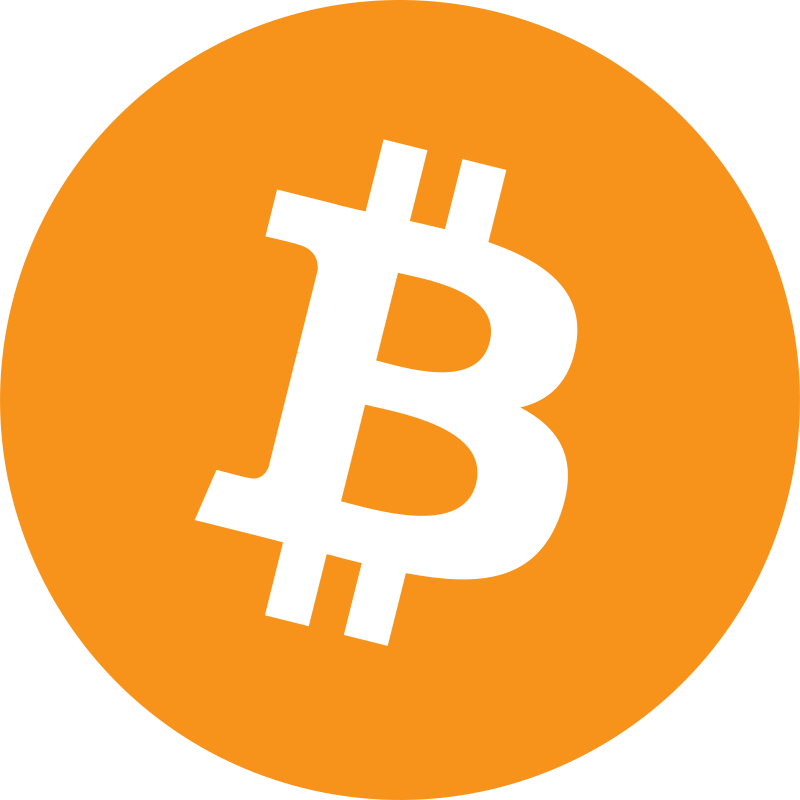In this article, I will discuss the best aggregators for bridging EVM to non-EVM networks. These solutions enable seamless asset transfers across different blockchain ecosystems, enhancing interoperability.
Whether you’re looking for speed, low fees, or broad network support, this guide will highlight the top protocols to efficiently bridge between EVM and non-EVM chains.
Key Points & Best Aggregator For Bridging EVM To Non-EVM Networks List
| Protocol | Key Points |
|---|---|
| Synapse Protocol | Cross-chain bridge connecting EVM and non-EVM chains; offers liquidity and fast transfers; built-in token swaps. |
| Allbridge | Multi-chain bridge supporting EVM, non-EVM, and Bitcoin; allows asset transfers across chains; simple interface. |
| Stargate | Unified liquidity protocol; provides seamless transfers between different blockchains; low fees; high-speed cross-chain swaps. |
| Arbitrum Bridge | Optimistic rollup-based bridge for transferring assets between Ethereum and Arbitrum; efficient, low-cost transfers for Ethereum users. |
| Celer cBridge | High-performance multi-chain bridging protocol; supports instant transfers; focuses on scalability, low fees, and fast settlement. |
| Across Protocol | Cross-chain protocol optimized for low latency and cost-efficient transfers; supports Ethereum, Arbitrum, Optimism, and more. |
| Rango Exchange | Decentralized cross-chain aggregator; uses various bridges for optimal routing; focuses on multi-chain interoperability. |
| RhinoFi | Cross-chain aggregation protocol; combines liquidity from multiple decentralized exchanges and bridges to provide efficient swaps. |
| Orbiter Finance | Multi-layered cross-chain bridging with an emphasis on decentralized finance (DeFi); allows token transfers between Ethereum, Layer 2, and others. |
| deBridge | Protocol offering cross-chain and cross-layer interoperability; facilitates token transfers and DeFi interactions across chains with low fees. |
10 Best Aggregator For Bridging EVM To Non-EVM Networks
1.Synapse Protocol
Synapse Protocol is one of the best cross-chain bridges allowing EVM and non-EVM chains to be interconnected. It allows easy movement of assets from one blockchain to another. Users have the option to bridge tokens between different networks as it accepts EVM and non-EVM chains.
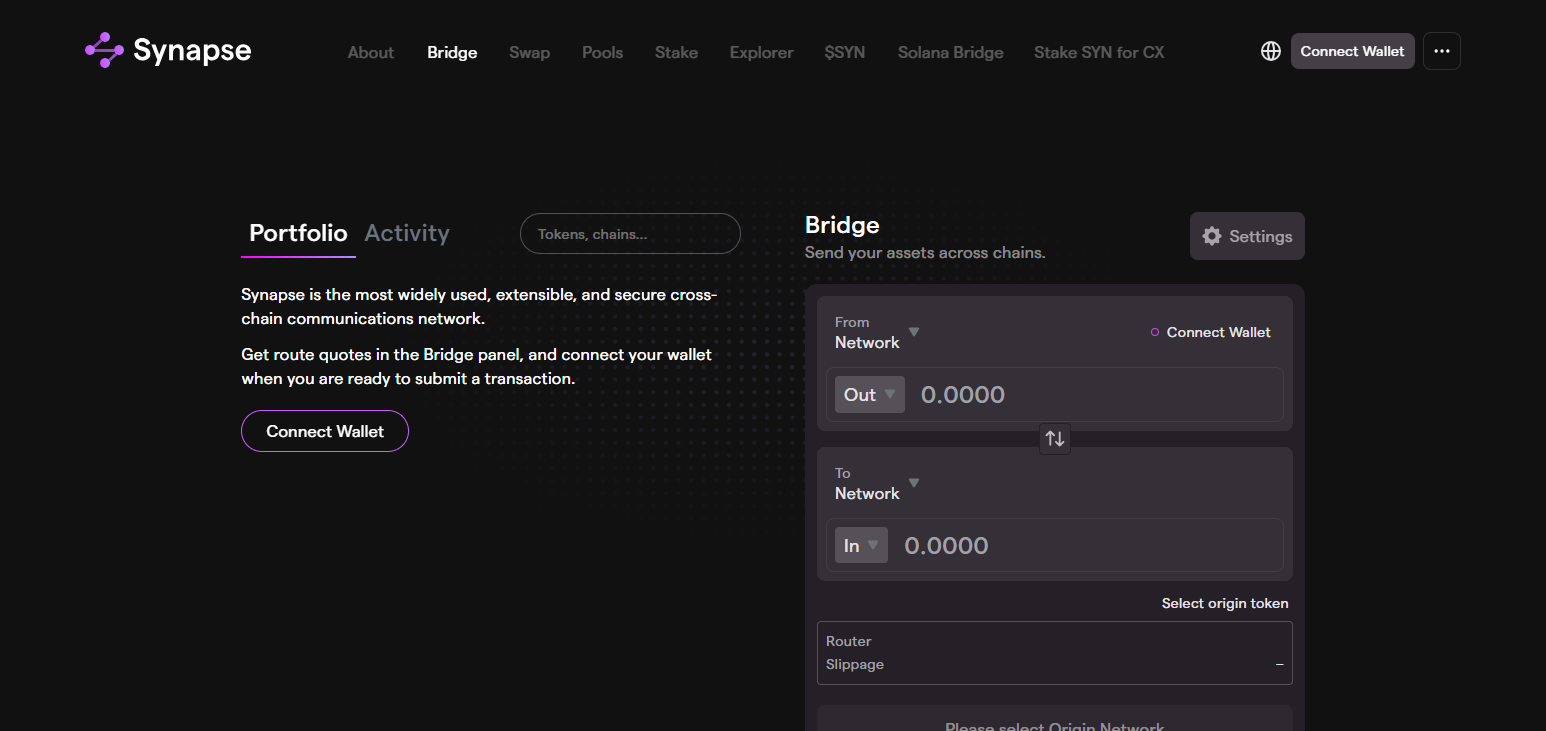
A unique feature of Synapse is its liquidity layer, which ensures efficient cross-chain transactions through inexpensive token swaps, low fees, and fast transaction speeds. Being a decentralized platform, it offers the best control and security which enables the user to feel safe while bridging assets within the blockchain ecosystem.
| Feature | Details |
|---|---|
| Main Function | Aggregates multiple bridges to seamlessly connect EVM and non-EVM networks for asset transfers. |
| Supported Networks | Ethereum, Binance Smart Chain, Avalanche, Solana, Terra, and more. |
| Key Advantage | Allows cross-chain transfers between EVM and non-EVM blockchains with efficient routing. |
| Liquidity | Provides liquidity across multiple chains, ensuring fast and low-cost transfers. |
| Token Swapping | Built-in token swap feature for ease of use. |
| Security | Decentralized and secure with a focus on user safety and reliability in transactions. |
| Speed and Efficiency | High-speed transfers with minimal fees compared to traditional cross-chain methods. |
| Use Case | Ideal for bridging assets between EVM and non-EVM networks, supporting diverse DeFi activities. |
| User Interface | Simple and user-friendly interface for seamless cross-chain interactions. |
2.Allbridge
Allbridge is a multi-chain protocol which has the ability to connect assets from both EVM and non EVM chains,even Bitcoin. It’s interface is simple and beautifully designed, which makes Allbridge user friendly and is comfortable for novice users too.
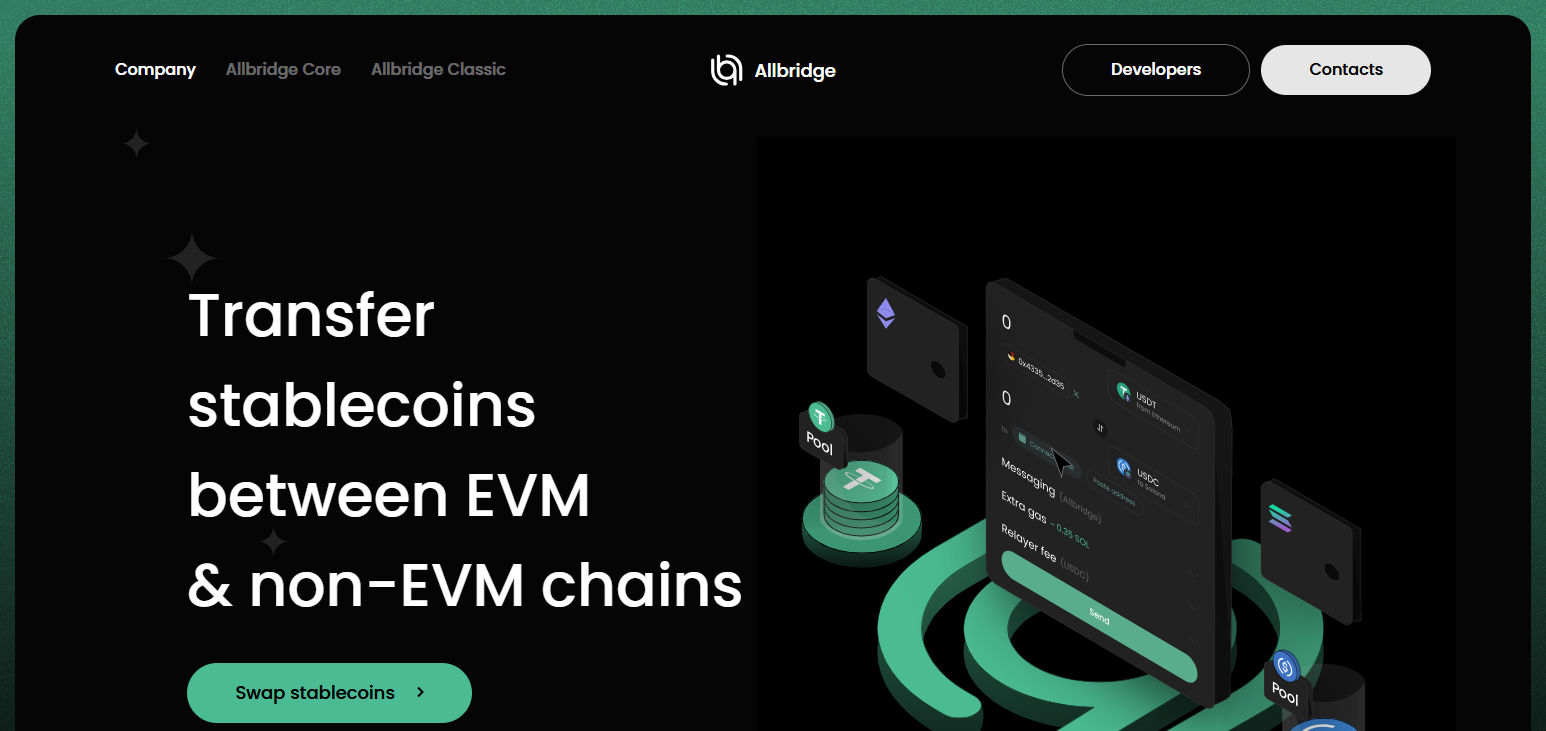
Allbridge is an economical and swift way of transferring tokens accross several blockchains without being dependent on intermediary services. It helps sustains Solana and Terra, both of which are non-EVM chains, and expands the usage scope further, enabling the users to enjoy a larger variety of assets and blockchains.
| Feature | Details |
|---|---|
| Main Function | Bridges assets across EVM, non-EVM, and Bitcoin networks. |
| Supported Networks | Ethereum, Solana, Terra, Binance Smart Chain, Avalanche, and more. |
| Key Advantage | Supports multiple blockchain ecosystems, including non-EVM networks like Solana and Terra. |
| Liquidity | Aggregates liquidity from various networks to ensure fast and efficient transfers. |
| Token Swapping | Supports token swapping across chains for seamless cross-chain transactions. |
| Security | Secure bridging process with a focus on user safety and trust. |
| Speed and Efficiency | Quick asset transfers with minimal fees across supported networks. |
| User Interface | Simple, intuitive interface designed for ease of use. |
| Use Case | Best for users looking to bridge assets between EVM and non-EVM chains, including Bitcoin. |
3.Stargate
Stargate functions as a cross-chain liquidity protocol, which means users can transfer assets from one blockchain to another without hassle. Users are able to bridge assets with low fees while enabling fast and efficient swaps.
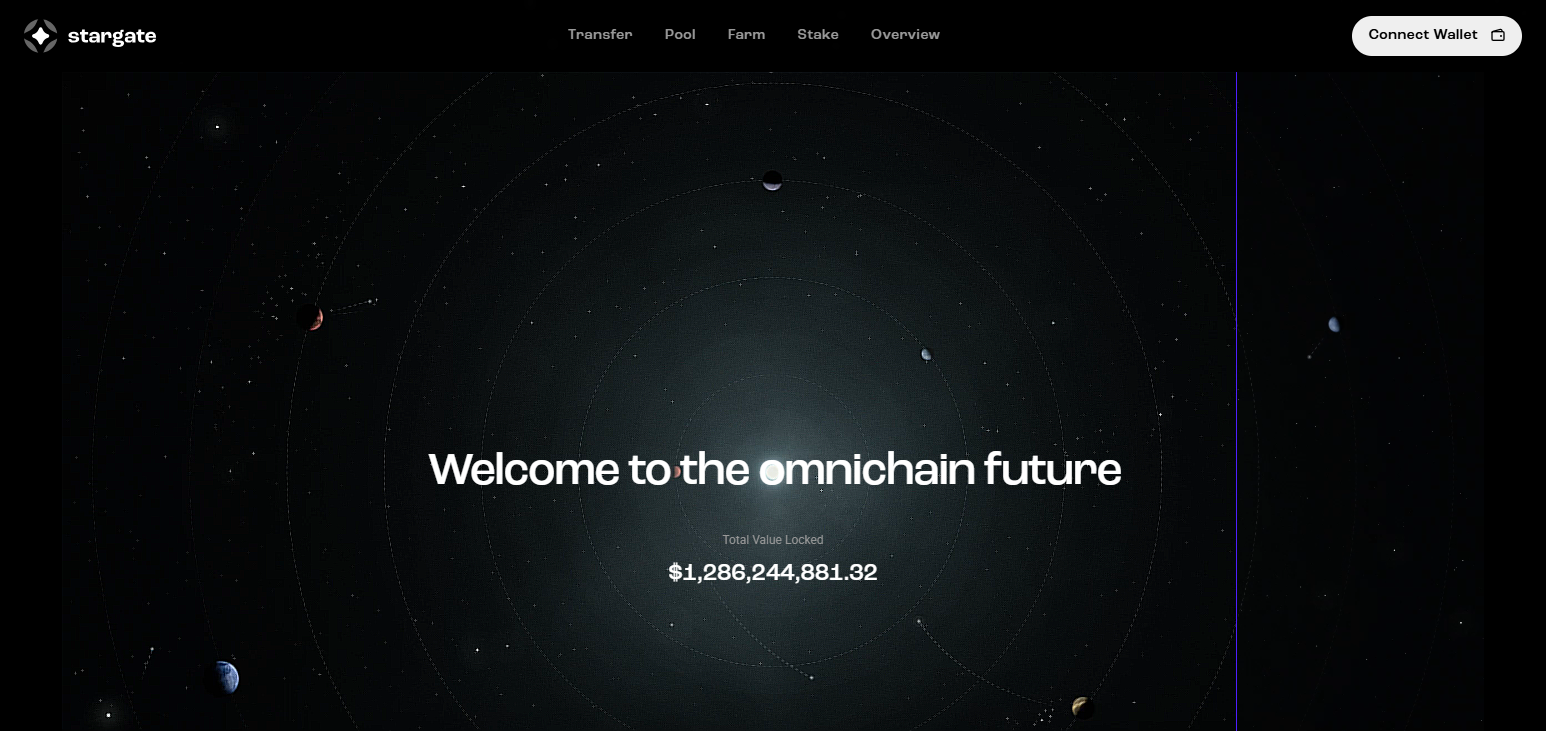
Stargate is ideal for users wishing to bridge assets from different ecosystems as it supports Ethereum, Binance Smart Chain and Layer 2 Solutions. Users can always expect a reliable and quick solution for cross-chain bridging due to unique liquidity pools guaranteeing transfers assets.
| Feature | Details |
|---|---|
| Main Function | Cross-chain liquidity protocol enabling seamless transfers between multiple blockchains. |
| Supported Networks | Ethereum, Binance Smart Chain, Avalanche, and others. |
| Key Advantage | Unified liquidity pools for efficient and low-cost transfers across chains. |
| Liquidity | Provides deep liquidity across supported chains, ensuring fast and reliable asset transfers. |
| Token Swapping | Direct cross-chain swaps between different assets and networks. |
| Security | Decentralized and secure with built-in safety protocols for trustless transactions. |
| Speed and Efficiency | Fast transfers with minimal fees, optimized for speed and reliability. |
| User Interface | Easy-to-use, simple interface for seamless cross-chain interactions. |
| Use Case | Ideal for bridging assets between EVM and non-EVM blockchains with a focus on liquidity and speed. |
4.Arbitrum Bridge
Arbitrum Bridge is designed to enable seamless transfers from Ethereum to the Arbitrum network, an Ethereum-compatible Optimistic Rollup. Using Arbitrum, the bridge achieves lower transaction fees and faster confirmation times than the Ethereum mainnet.

It serves users well, as Ethereum users wishing to arbitrage transfer assets during high fee periods can seamlessly transfer assets to Arbitrum where fees and scalability is cheaper. For secure and cost-effective transfers in the Ethereum ecosystem, Arbitrum Bridge is an essential tool.
| Feature | Details |
|---|---|
| Main Function | Facilitates transfers between Ethereum and Arbitrum (Optimistic Rollup). |
| Supported Networks | Ethereum and Arbitrum. |
| Key Advantage | Optimistic rollups for faster, cheaper transactions compared to Ethereum’s mainnet. |
| Liquidity | Provides liquidity to move assets efficiently between Ethereum and Arbitrum. |
| Token Swapping | Focuses on bridging assets, not token swapping. |
| Security | Uses Ethereum’s security model with the added benefits of Arbitrum’s layer 2. |
| Speed and Efficiency | Faster transfers with significantly reduced fees compared to Ethereum mainnet. |
| User Interface | Simple interface for seamless Ethereum to Arbitrum transfers. |
| Use Case | Ideal for Ethereum users looking to move assets to Arbitrum for cheaper and faster transactions. |
5.Celer cBridge
This is copypaste from the feedback page ‘Celer is a multi-chain bridging protocol that provides seamless and fast transfer of data across multiple blockchain networks. Celer cBridge ensures efficient, instant transactions by leveraging hundreds of liquidity pools, enabling the transfer at a fraction of the cost that is otherwise incurred with traditional bridges.
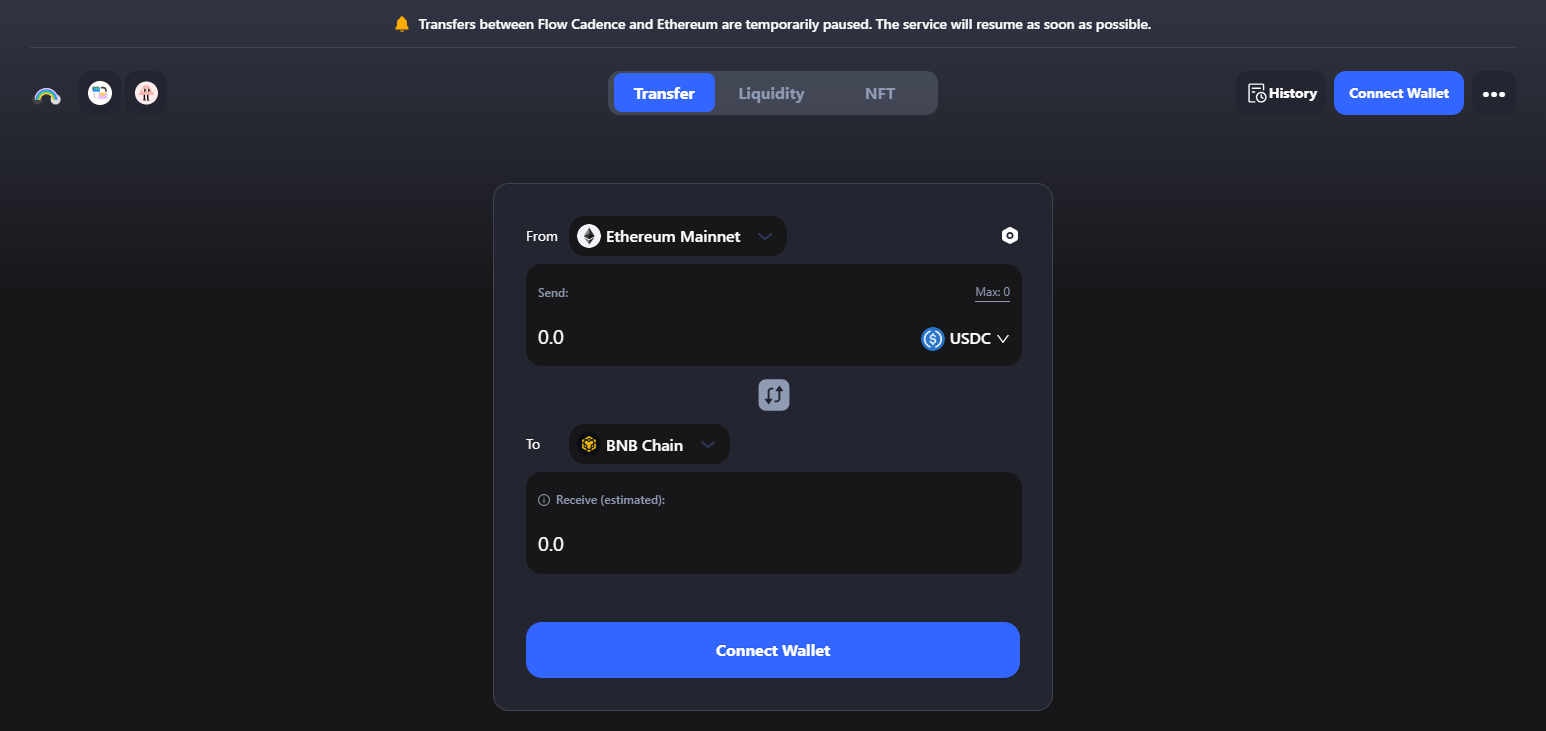
The protocol has been designed considering scalability so as to enable cross-chain interchangeability with economies of scale. With over 20 supported chains including Ethereum, Binance Smart Chain and Avalanche, it efficiently serves as one-stop solution for asset transfer.’
| Feature | Details |
|---|---|
| Main Function | Multi-chain bridging protocol enabling cross-chain transfers with low latency. |
| Supported Networks | Ethereum, Binance Smart Chain, Avalanche, Polygon, and other Layer 2 solutions. |
| Key Advantage | Fast, low-cost transfers with a focus on scalability and efficiency. |
| Liquidity | Liquidity sourced from multiple networks, ensuring fast and cost-effective bridging. |
| Token Swapping | Supports cross-chain asset transfers, but not focused on token swaps. |
| Security | Decentralized and secure with encryption and multiple layers of protection. |
| Speed and Efficiency | Optimized for high-speed, low-cost transactions with minimal latency. |
| User Interface | User-friendly interface that simplifies the cross-chain bridging process. |
| Use Case | Best for users seeking fast, low-cost transfers between various EVM and non-EVM networks. |
6.Across Protocol
Across Protocol provides an optimized solution for minimum-latency and low-cost transfers across chains. Along with Ethereum, assets on Arbitrum, Optimism, and other Layer 2 or L2 solutions get bridged seamlessly and efficiently.
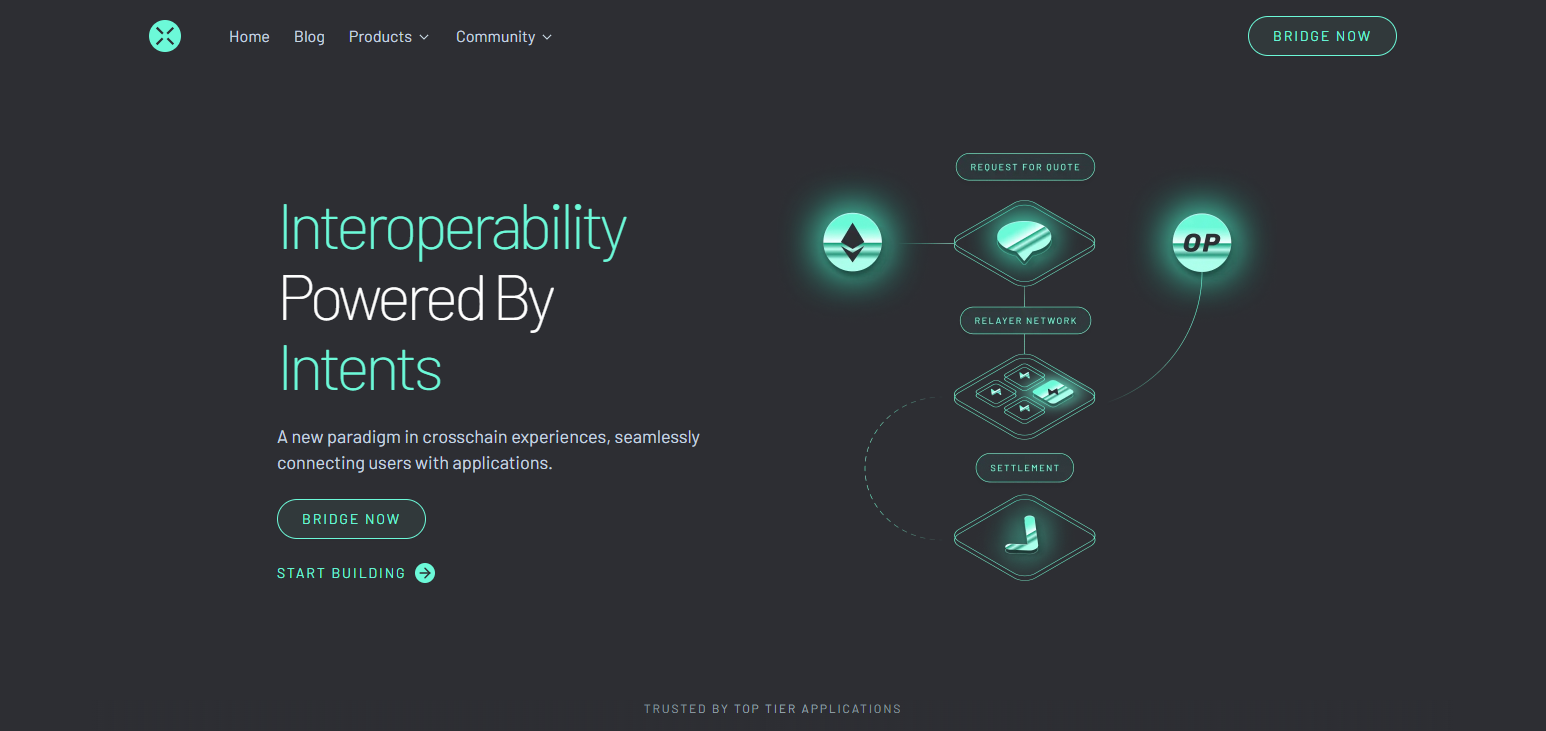
The protocol eliminates transaction delays while transfering to a L2, ad also cuts down the transaction cost. For these reasons, Across Protocol is popularly known for providing a reliable cross-chain experience.
| Feature | Details |
|---|---|
| Main Function | Optimized cross-chain protocol for low-latency, cost-efficient transfers between blockchains. |
| Supported Networks | Ethereum, Arbitrum, Optimism, and other Layer 2 solutions. |
| Key Advantage | Fast and low-cost bridging, designed for seamless Layer 2 and Layer 1 integration. |
| Liquidity | Efficient liquidity management ensuring quick and cheap transfers across supported chains. |
| Token Swapping | Focuses on cross-chain asset bridging rather than token swaps. |
| Security | Built with security-first principles, ensuring safe cross-chain transactions. |
| Speed and Efficiency | Optimized for low latency and cost-effective transfers, ideal for high-frequency use. |
| User Interface | Simple, intuitive interface for easy cross-chain transactions. |
| Use Case | Best for users seeking efficient bridging between EVM and Layer 2 solutions. |
7.Rango Exchange
Rango Exchange serves as a decentralized cross-chain aggregator that aims to optimize asset routing across differing blockchain networks. It pools liquidity from different bridges and decentralized exchanges to help users search for the quickest transfer route at the most competitive price.
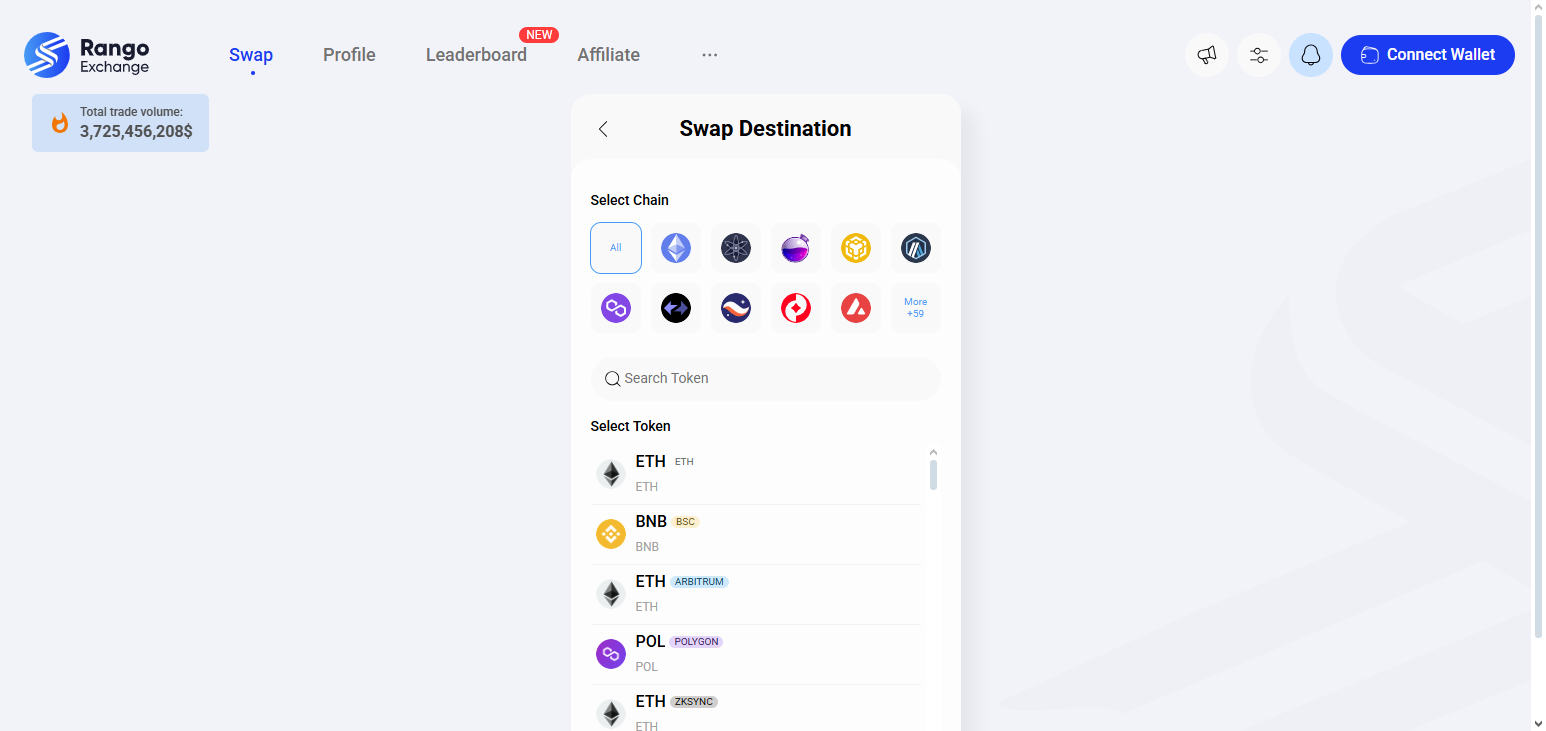
Rango Exchange is ideal for users aiming to minimize transaction costs because it supports and facilitates countless blockchains along with seamless swap transactions. Its dedication to multi-chain interoperability guarantees that users can bridge assets from a wide array of networks, which makes it a flexible solution.
| Feature | Details |
|---|---|
| Main Function | Decentralized cross-chain aggregator for routing and bridging assets across multiple networks. |
| Supported Networks | Ethereum, Binance Smart Chain, Solana, Avalanche, and more. |
| Key Advantage | Aggregates liquidity from multiple bridges and DEXs to optimize cross-chain transactions. |
| Liquidity | Leverages multiple liquidity sources for fast and efficient asset transfers. |
| Token Swapping | Focuses on seamless cross-chain asset swaps with optimized routing. |
| Security | Secure, decentralized, and privacy-focused bridging solutions. |
| Speed and Efficiency | Optimizes for speed and minimal transaction fees with real-time routing. |
| User Interface | User-friendly and intuitive interface for seamless cross-chain experience. |
| Use Case | Ideal for users seeking the best prices and routes for cross-chain transfers. |
8.RhinoFi
RhinoFi is a cross-chain aggregation protocol that specializes in fetching the most optimal routing for token swaps and transfers of any kind. Through the pooling of liquidity from decentralized exchanges and bridges, RhinoFi enables these users to transfer assets on different blockchains in the most seamless manner.
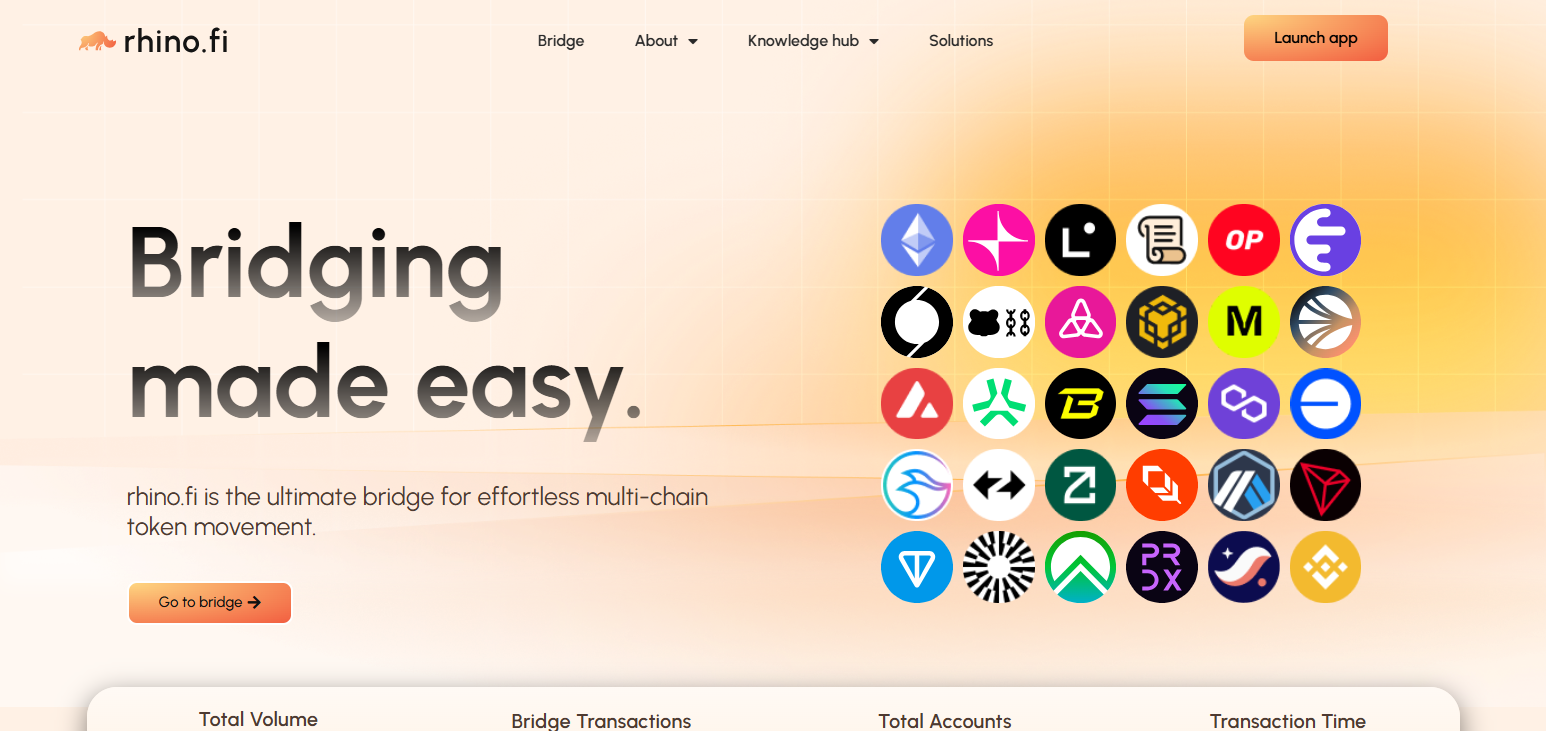
It features a user-friendly interface and supports many DeFi protocols which empowers users to initiate transactions on different networks without incurring a lot of costs or long waiting periods. Enhanced utility for users in the DeFi ecosystem is granted by RhinoFi’s emphasis on decentralized finance.
| Feature | Details |
|---|---|
| Main Function | Cross-chain aggregator that provides optimal routing for token swaps and transfers. |
| Supported Networks | Ethereum, Binance Smart Chain, Solana, Avalanche, and others. |
| Key Advantage | Combines liquidity from decentralized exchanges and bridges to ensure efficient transfers. |
| Liquidity | Aggregates liquidity from multiple sources, ensuring optimal routing for assets. |
| Token Swapping | Focuses on efficient token swaps across chains with minimal slippage and fees. |
| Security | Secure and decentralized, ensuring safe transactions across multiple blockchains. |
| Speed and Efficiency | Optimizes transaction speed and cost by routing through the best available liquidity pools. |
| User Interface | Simple and intuitive interface for an easy cross-chain experience. |
| Use Case | Ideal for users seeking seamless, efficient asset bridging and token swapping across chains. |
9.Orbiter Finance
Orbiter Finance is a multi-layered cross-chain bridge focused on connecting Ethereum with other blockchain ecosystems and Layer 2 solutions. It enables token transfers from Ethereum to various Layer 2s such as Arbitrum, Optimism, and zkRollups.

Orbiter Finance allows users to effortlessly and cheaply transfer assets within these networks while benefitting from lower fees and higher speeds. Its decentralized approach allows users to bridge assets without depending on centralized services, making it a crucial solution for Layer 2 scaling and adoption.
| Feature | Details |
|---|---|
| Main Function | Multi-layered cross-chain bridge enabling transfers between Ethereum, Layer 2, and other chains. |
| Supported Networks | Ethereum, Arbitrum, Optimism, zkRollups, and other Layer 2 solutions. |
| Key Advantage | Focus on bridging assets between Layer 1 and Layer 2 solutions with a decentralized approach. |
| Liquidity | Efficient liquidity management across multiple networks, ensuring quick asset transfers. |
| Token Swapping | Primarily focused on asset bridging rather than token swapping between chains. |
| Security | Secure and decentralized, ensuring trustless cross-chain transactions. |
| Speed and Efficiency | Optimized for fast and low-cost transfers between Ethereum and Layer 2 solutions. |
| User Interface | Simple, clean, and user-friendly interface for seamless cross-chain bridging. |
| Use Case | Ideal for users looking to bridge assets between Ethereum and Layer 2 networks for cheaper and faster transactions. |
10.deBridge
deBridge is a decentralized protocol that breaks down boundaries between different blockchain protocols enabling token and data transfers across various layers and blockchains. It has built-in cross-communication and token transfer features across various ecosystems such as Ethereum and Solana.
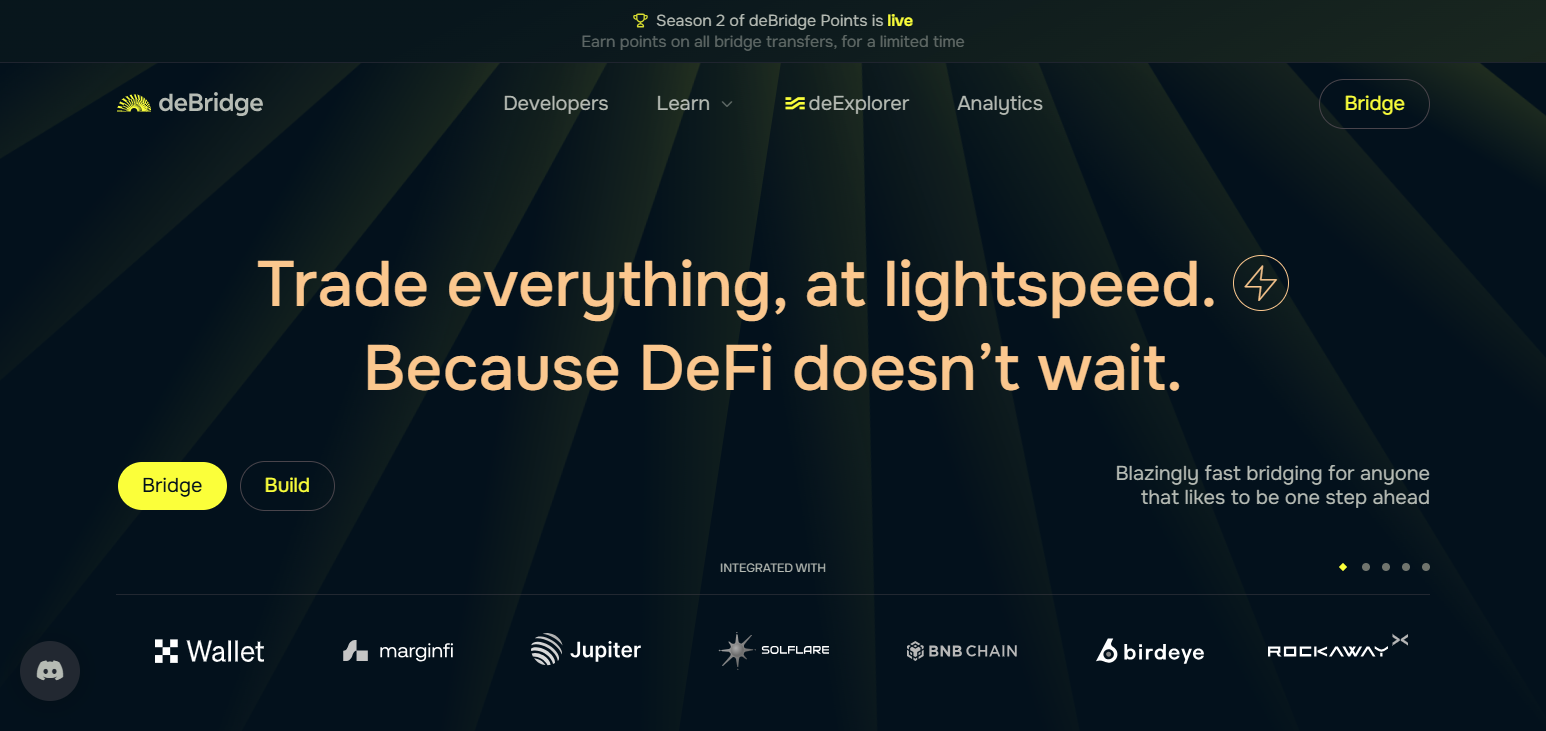
One of the first approaches of the DeBridge technology is low transaction fees and speed when engaging with different DeFi services. It allows free development of cross-chain dApps which is one of the fundamental goals of the protocol and allows expanding the borders of the cross-chain world.
| Feature | Details |
|---|---|
| Main Function | Cross-chain and cross-layer interoperability protocol for seamless token transfers. |
| Supported Networks | Ethereum, Solana, Binance Smart Chain, Polygon, Avalanche, and others. |
| Key Advantage | Facilitates cross-chain and cross-layer interactions with a focus on scalability and security. |
| Liquidity | Ensures efficient liquidity across supported chains, enabling quick and cost-effective transfers. |
| Token Swapping | Primarily focused on bridging assets, not token swapping, across different networks. |
| Security | Secure, decentralized, and ensures trustless cross-chain interactions with low-risk protocols. |
| Speed and Efficiency | Optimized for fast and low-cost transfers between multiple blockchain ecosystems. |
| User Interface | Simple interface for an easy and intuitive cross-chain bridging experience. |
| Use Case | Best for users looking to bridge assets and interact across multiple blockchains seamlessly. |
Conclusion
To sum up, the most effective aggregator for connecting EVM to non-EVM networks is contingent on the user’s requirements like speed, cost, and the networks supported. Synapse Protocol, Allbridge, and Stargate have remarkable efficiency, security, and liquidity
And therefore stand out among the others. These Protocols have different features which makes them ideal for effortless and economical cross-chain transfers between different blockchain ecosystems.









